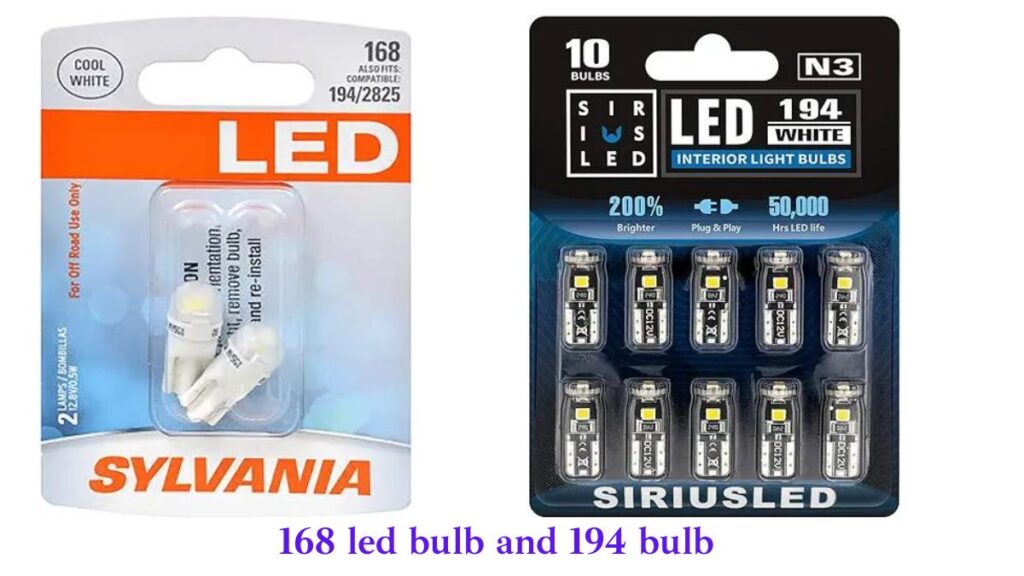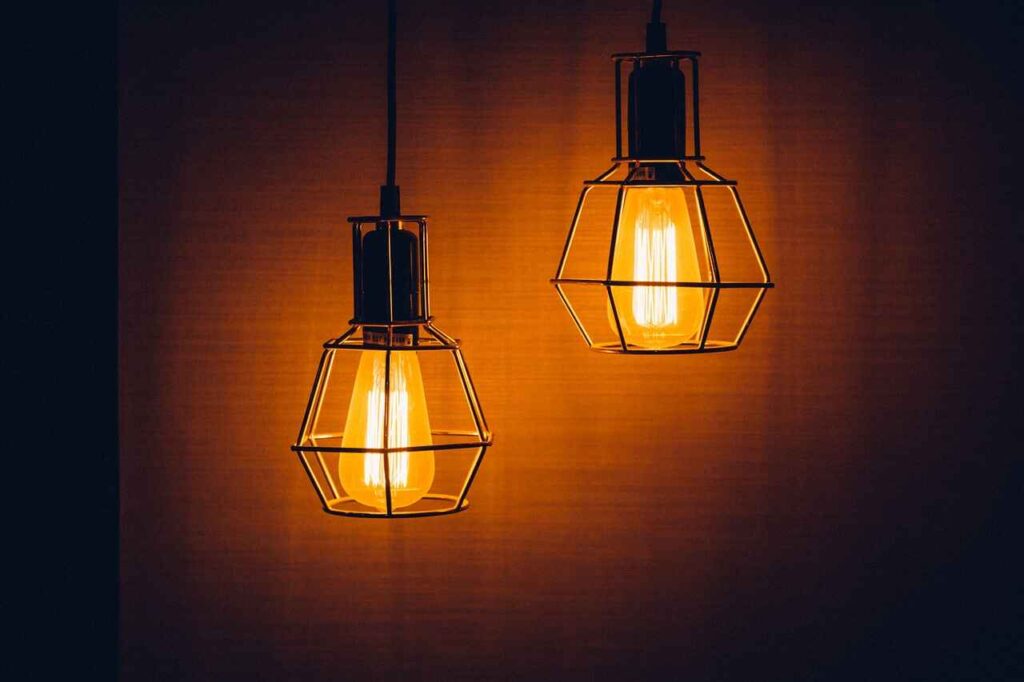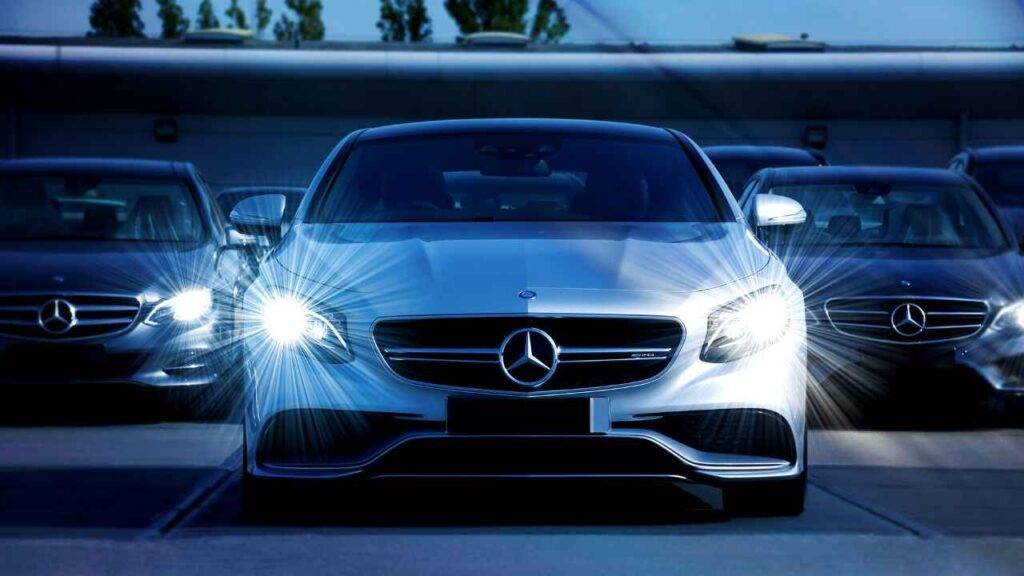LED bulbs, like the 168 model, are popular for their energy efficiency and long lifespan. However, even the best technology can run into issues. If you’re using 168 LED bulbs in your vehicle or home, you might encounter some common problems. In this article, we’ll go over five of these issues and provide practical solutions. Our goal is to help you keep your lighting in top shape without the need for expensive replacements.

Common 168 LED Bulb Issues and How to Fix Them
1. Dim Lighting
One of the most common issues with 168 LED bulbs is dim lighting. You expect your LED bulbs to shine bright, but sometimes they don’t. This can be frustrating, especially if you rely on them for visibility in your vehicle.
Causes:
1. Voltage Issues: LED bulbs are sensitive to voltage changes. If the power supply isn’t stable, your bulb may not get the power it needs.
2. Aging: Like all bulbs, LEDs can dim over time, especially if they’ve been used extensively.
3. Wiring Problems: Faulty wiring can prevent the bulb from receiving enough power.
Fixes:
1. Check the Voltage: Make sure your power supply is stable and within the required range for the bulb.
2. Replace Old Bulbs: If your bulb is old, it might be time to replace it. LED bulbs last long, but they aren’t immortal.
3. Inspect Wiring: Look at the wiring for any loose connections or damage. Fixing these can often solve dim lighting issues.
2. Flickering Bulbs
Another frequent complaint is flickering. what does flickering mean. This issue can be not only annoying but also a sign of deeper problems. Flickering 168 led can be a distraction, especially if you’re driving.
Causes:
- Inconsistent Power Supply: Fluctuations in the power supply can cause your 168 LED bulb to flicker.
- Faulty Driver: LED bulbs use drivers to convert power, and a faulty driver can lead to flickering.
- Compatibility Issues: If you’re using a dimmer switch that isn’t compatible with LED bulbs, it can cause flickering.
Fixes:
- Stabilize Power Supply: Ensure that your power supply is consistent. If the flickering happens only in certain situations, consider using a voltage stabilizer.
- Replace the Driver: If you suspect the driver is faulty, it’s best to replace it. This is a bit technical, so you might need professional help.
- Check Dimmer Switches: If you’re using a dimmer switch, make sure it’s LED-compatible. If not, you might need to replace the switch.

3. Overheating
Overheating is another issue you might face with 168 LED bulbs. While LEDs are known for their efficiency, they still produce some heat. If the heat isn’t managed well, it can lead to problems.
Causes:
- Poor Ventilation: LED bulbs need proper ventilation to dissipate heat. If they’re in a confined space, they can overheat.
- High Ambient Temperature: Using LEDs in a high-temperature environment can cause overheating.
- Incorrect Installation: If the bulb isn’t installed correctly, it may not cool down as it should.
Fixes:
- Improve Ventilation: Ensure that the bulb has enough space to breathe. If it’s in a tight spot, consider moving it or improving airflow.
- Use in Proper Conditions: Avoid using LED bulbs in extremely hot environments. If that’s unavoidable, look for bulbs designed to withstand higher temperatures.
- Reinstall the Bulb: Make sure the bulb is installed correctly. If you’re not sure, refer to the installation guide or get help from a professional.
4. Buzzing or Humming Noise
Have you ever noticed a buzzing or humming noise coming from your LED bulb? This issue isn’t as common as others but can be quite irritating when it happens.
Causes:
- Electrical Interference: LED bulbs can sometimes pick up interference from other electrical devices.
- Incompatible Dimmer Switch: Just like flickering, a buzzing noise can occur if the dimmer switch isn’t compatible with LED bulbs.
- Poor Quality Bulbs: Low-quality LED bulbs are more likely to produce noise.
Fixes:
- Minimize Interference: Try to reduce the number of electrical devices near your LED bulbs. If the noise persists, you may need to install a filter to block the interference.
- Replace the Dimmer Switch: If you’re using a dimmer, switch it to one that’s compatible with LED bulbs. This can often eliminate the noise.
- Upgrade Your Bulbs: If you’re using cheap bulbs, consider upgrading to higher-quality ones. Quality bulbs are less likely to buzz or hum.
5. Bulbs Not Working After Installation
Sometimes, you install a brand-new 168 LED bulb, but it doesn’t work. This can be especially frustrating if you’ve just bought it and were expecting better performance.
Causes:
- Faulty Bulb: Even new bulbs can sometimes be faulty right out of the box.
- Incorrect Installation: If the bulb isn’t installed properly, it may not light up.
- Incompatible Socket: Not all sockets are made equal, and some may not be compatible with LED bulbs.
Fixes:
- Test the Bulb: Try the bulb in a different socket to see if it works. If it doesn’t, the bulb might be faulty, and you should return it.
- Reinstall the Bulb: Make sure the bulb is correctly seated in the socket.
- Check Socket Compatibility: Ensure that the socket is compatible with LED bulbs. If not, you may need to replace the socket or use a different type of bulb.

How to Prevent Future Issues
While it’s good to know how to fix these common problems, prevention is always better than cure. Here are some tips to keep your 168 LED bulbs running smoothly:
- Buy Quality Bulbs: Invest in good-quality bulbs from reputable brands. They may cost more, but they’re less likely to cause problems.
- Proper Installation: Always follow the installation instructions carefully. If you’re unsure, get help from a professional.
- Regular Maintenance: Check your bulbs regularly for any signs of wear or damage.
- Use Compatible Equipment: Ensure that all the components in your lighting system—dimmer switches, drivers, and sockets—are compatible with LED technology.
Conclusion
168 LED bulbs are a fantastic choice for energy-efficient lighting, but like all technology, they can run into issues. By understanding the common problems—dim lighting, flickering, overheating, buzzing noise, and non-functionality after installation—you can take steps to fix them quickly. Remember, prevention is key, so always invest in quality bulbs, install them correctly, and perform regular maintenance.
With this knowledge, you can enjoy the benefits of your 168 LED bulbs without the hassle of frequent repairs. Whether you’re lighting your home or vehicle, these tips will help you keep everything running smoothly.
Related articles:
Hi, I’m Malik Suhail—an SEO expert, web designer, and passionate blogger with 2 years of experience. I specialize in crafting content that is not only informative but also tailored to meet the needs of my readers.
I write about diverse topics, always striving to simplify complex ideas and provide valuable insights that resonate with my audience. Whether it’s about SEO strategies, web design trends, or blogging tips, I am committed to delivering well-researched, practical, and easy-to-understand information.
My mission is to help readers navigate the digital world with confidence and clarity. I believe in adding value through authentic content that inspires action and delivers results.


